Chai Style Art: Bauer’s Urban Ranch
Lawyer Henry Bauer wears many hats, widening the brim as rugged cowboy and art collector.
After 37 years with the Atlanta Journal-Constitution and now with the AJT, , Jaffe’s focus is lifestyle, art, dining, fashion, and community events with emphasis on Jewish movers and shakers.
Seeking a haven for his family after his father’s death in 1983, attorney Henry Bauer and wife, Mary Carole, also an attorney, discovered the R Lazy S dude ranch at the foot of the Grand Tetons outside Jackson Hole, Wyo.
What was supposed to be a one-time family experience with two children has become an annual summer pilgrimage now totaling 11 with five grandchildren.
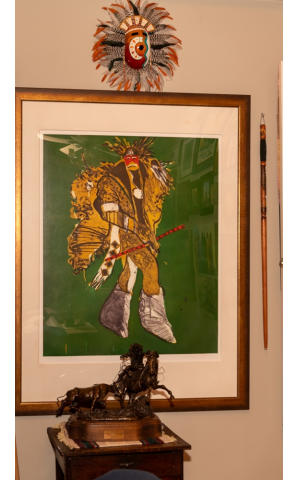
“Returning to the ranch each summer is like going back to family adventure camp with horseback riding, hiking, fly fishing, games on horseback and cattle herding competitions. This summer, our two oldest grandchildren and our son-in-law “summated” the Grand Teton,” said Bauer.
Prior to the ranch experience, Henry was a collector of folk art and art commemorating the South’s civil rights struggle. In a desire to bring the ranch home, Henry began collecting representational, thematic and abstract paintings of the West and Southwest and the lifestyles of Native American tribes.
A gift of “Custer and Crazy Horse” from his wife started Bauer on his way to what is now a respected collection of Native American and Western art and sculpture depicting Western life and wildlife.
The Bauer “Ranch” in the Sherwood Forest neighborhood near The Temple, includes indigenous bead work, carvings of wildlife made from wood, whale bones, antlers as well as Native American masks and Kachina dolls. For his 65th birthday, Henry commissioned four collage paintings depicting the history of baseball by renowned Atlanta artist Charly Palmer.
Saddle up for a Western art ride due east of the Tetons.
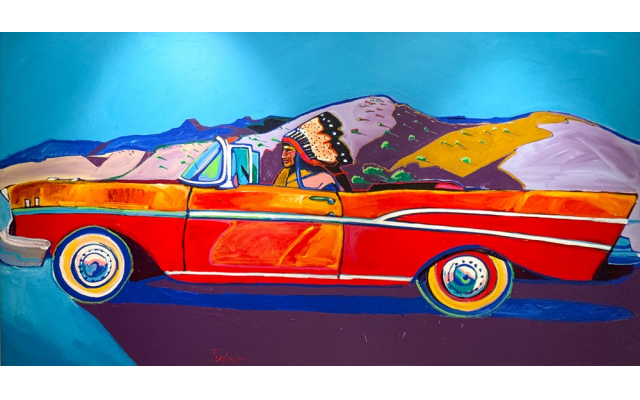
Jaffe: What’s the vibe in your yard?
Bauer: The front yard hosts a life-sized elk crafted from individual pieces of teak acquired while hiking in Glacier National Park; a cowboy playing a guitar made out of a pot-bellied stove, a life-sized deer with a hornet’s nest in its antlers made from scrap metal, and a deer family crafted from rebar. The private backyard refuge has Beau Smith’s famous bronze frogs – one playing a violin; a life-sized bear carrying a fish in its mouth made from of scrap metal acquired from the Atlanta History Center by way of craftsman Tom Prochnow (Madison, Ga.) The “outback” has ample room for our beloved New Zealand herding dog, Scooter. Also in the backyard is a bronze relief of pack horses crossing a swollen river I commissioned by former Atlanta lawyer turned sculptor, Tom Player.
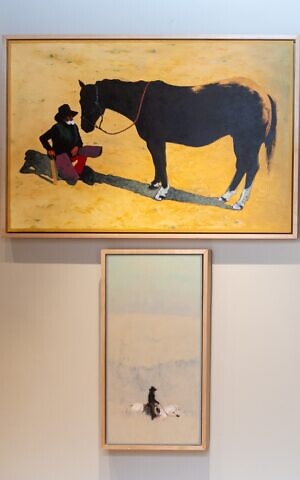
Jaffe: Cowboy hats are everywhere. What else are we seeing?
Bauer: We have an eclectic collection including a large moose antler with a carved eagle; jeweled knives from several medical mission trips to a remote Nepalese village, a wooden albatross from New Zealand, intricately carved loons by Alaskan Intuit tribesman, a rhinoceros menorah from the Jewish Museum in Cape Town, an Australian didgeridoo carved from a cactus, a monochromatic paper sculpture of the Taj Mahal and keepsakes from Israel and Eastern Europe.
Jaffe: What Western artists do you favor?
Bauer: I have original sculptures of the Buffalo Soldiers by Ed Dwight, one of the first African American astronauts who segued into sculpture when he didn’t get to fly to the moon. He was a Renaissance man, as he was also an IBM computer engineer, restaurateur, and real estate developer whose sculptures are in museums and galleries worldwide.
Some of my favorite Native American and Western artists are Dan Namingha, Malcolm Furlow, Michael Kalish, Tony Abeyta, Rocky Hawkins, Tom Gilleon, and John Nieto. Namingha’s abstract landscape paintings show respect for the Earth and the Moon and the spirit of his Hopi-Tewa ancestry. His works are shown in museums including the Smithsonian and Harvard. Furlow painted this engaging Indian Chief in a ’57 Chevy that spans a hallway. He and John Nieto were considered living legends in the fabric of Southwest art using acrylic images in royal blue, orange, peach, and yellow tones. Their works are in the Smithsonian and very high-brow collections like Bill Clinton, George H.W. Bush, Jane Goodall, Jon Bon Jovi, and the Coca-Cola Museum.
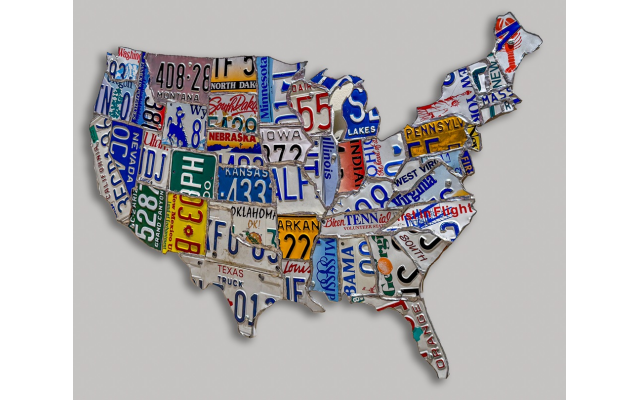
We have paintings by Abeyta, a member of the Navaho tribe known for his abstract Western landscapes, and Gilleon, famous for his depiction of tepees, Nieto and Rocky Hawkins known for their colorful abstract paintings of Plains Indians, and Lousia McElwain, noted for abstract landscapes.
Behind the piano is an aqua and brown wooden vessel from the Jackson Hole Arts Festival by Mary Envers constructed with 60,000 individual beads. Look very closely to see the detail.
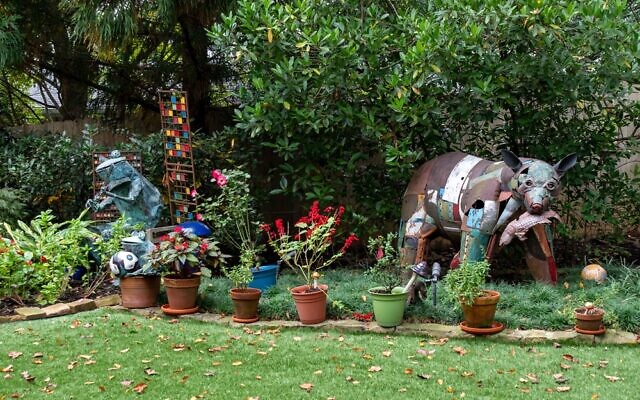
Jaffe: In addition to the Western art, we see…
Bauer: Folk art which I began deemphasizing after I got into the Western realm. Our work by Alpha Andrews is on three different layers of glass in the powder room.
The dining room has one of Ab the Flagman’s most famous American flags created from reclaimed, reconstructed wood and found objects. His work is in the Atlanta High Museum of Art, as well as House of Blues venues and private collections like Microsoft.
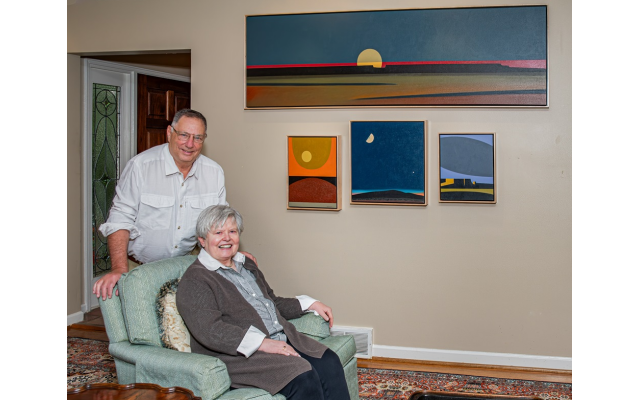
Opposite the piano in the living room is the Civil Rights area centered around the original 1968 “I AM A MAN” photograph of the Memphis garbage workers’ strike taken and signed by Ernest Withers, known as the African American chronicler of the civil rights era. It was later discovered that he was also working for the FBI. Above the photograph are two paintings depicting the same event by Atlanta artist Charly Palmer who recently was on the cover of Time Magazine honoring his civil rights art. His painting of activist Medgar Evers assassinated in Mississippi (1963), hangs in our dining room.
In the grandkids’ bedrooms are vibrant watercolor paintings of African American women in long colorful dresses by Texas folk artist, Jackie Halliburton.
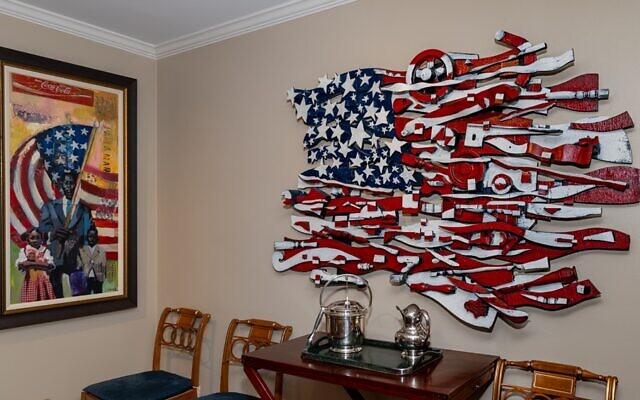
Jaffe: Last word.
Bauer: I smile thinking about how shocked my late parents would have been to have known that I would be recognized as a serious “collector.” Quite frankly, that surprises the hell out of me as I began collecting, not to become known for anything, but solely for the purpose of bringing joy to me and my family. Our art has been well-received on a number of art tours, the most common refrain being that ‘it reflects our family, not some interior designer.’”



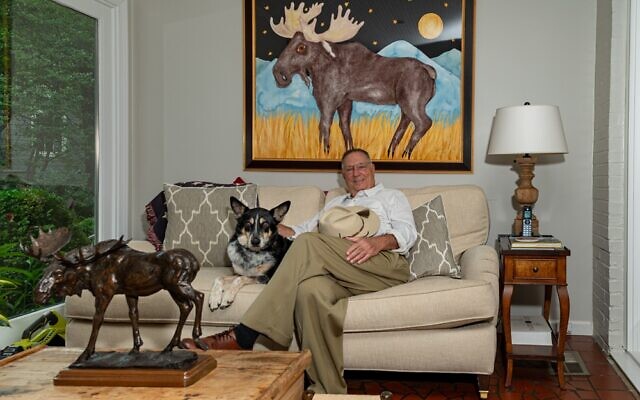
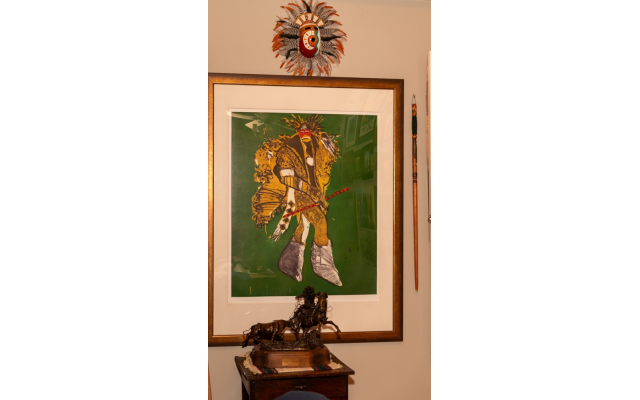
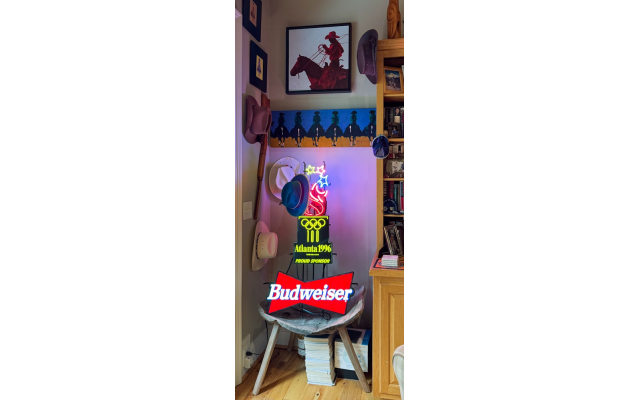
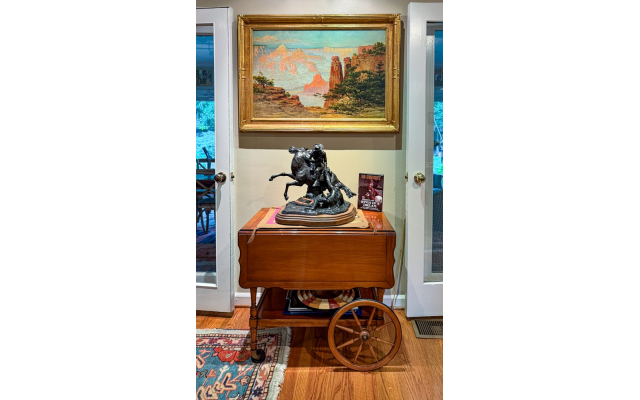
comments